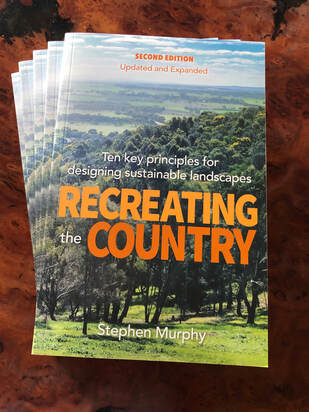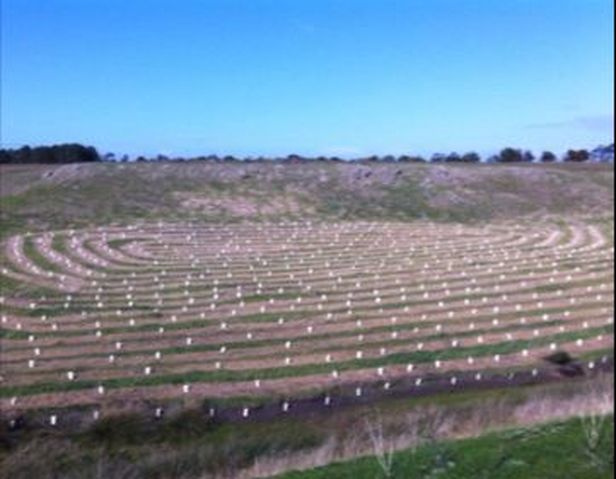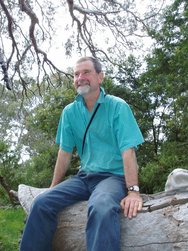Recreating the Country
Restoring wild Australia
...to explore this website please choose a pathway below;
be challenged - how to design wildlife rich sustainable landscapes>
be informed - easy to read articles on native plants and ecology>
be entertained - short stories on nature & the environment>
read my latest blog - What! plant a tree in the middle of the MCG
Recreating the Country - a design system to restore wild Australia
A resilient and biodiverse 'wild Australia' is fundamental to our health and well-being as humans living on this remarkable southern continent.
"Nature is the lifeblood of our society, if we simply destroy it when it gets in our way, we will pay the price"
Sir David Attenborough
The long term sustainability of our society is linked to three critical supporting principles, sometimes called ‘the triple bottom line’; economic security, social harmony and a healthy ecology.
This website explores ways to keep nature's ecology healthy and thriving for future generations.
A resilient and biodiverse 'wild Australia' is fundamental to our health and well-being as humans living on this remarkable southern continent.
"Nature is the lifeblood of our society, if we simply destroy it when it gets in our way, we will pay the price"
Sir David Attenborough
The long term sustainability of our society is linked to three critical supporting principles, sometimes called ‘the triple bottom line’; economic security, social harmony and a healthy ecology.
This website explores ways to keep nature's ecology healthy and thriving for future generations.
|
Most of us do what we can and try to reduce our ecological footprint by making lifestyle choices that are softer on our planet. But it's not easy, as each of our daily choices like our morning coffee, the clothes we buy, the food we eat and the houses we build make demands on the natural environment.
And it seems that our thirst for new technology is widening the divide between how we live and our connection with the natural world that underpins and resources our lifestyles. But there's a way back to nature and all the benefits that she provides; |
Recreating the Country (RtC), the book and the website, will help you connect with nature through stories about our indigenous plants and animals.
RtC will help clear the murky waters of indecision on environmental issues through well researched blogs on designing landscapes with indigenous plants. I also look at current revegetation challenges and offer practical solutions.
RtC will also challenge you to explore a new way of designing landscapes that mimics nature and brings biodiversity back to our gardens and back paddocks. These rural and urban copies of natural environments are called Sustainable Biorich Landscapes>.
Sustainable Biorich Landscapes are biodiverse, resilient and sustainable - click here to read more>.
They can also generate income without decreasing biodiversity. Read more about adding profit to biodiversity in designing for profit>
I hope to entertain, inform and challenge you to take a longer look at the sensational plants and animals that are part of our wonderful heritage. Congratulations on taking this first step to reconnecting with nature.
Your next important step is just a scroll or a click away.
RtC will help clear the murky waters of indecision on environmental issues through well researched blogs on designing landscapes with indigenous plants. I also look at current revegetation challenges and offer practical solutions.
RtC will also challenge you to explore a new way of designing landscapes that mimics nature and brings biodiversity back to our gardens and back paddocks. These rural and urban copies of natural environments are called Sustainable Biorich Landscapes>.
Sustainable Biorich Landscapes are biodiverse, resilient and sustainable - click here to read more>.
They can also generate income without decreasing biodiversity. Read more about adding profit to biodiversity in designing for profit>
I hope to entertain, inform and challenge you to take a longer look at the sensational plants and animals that are part of our wonderful heritage. Congratulations on taking this first step to reconnecting with nature.
Your next important step is just a scroll or a click away.
|
My background
For over thirty years as a Landcare nurseryman I have helped many landholders design plantations and choose plant species for revegetation projects. As a founding member of three 'Friends groups' I gained valuable experience working as a volunteer in local flora and fauna reserves for over 25 years. Also as a committed member of Australian Landcare since 1989 I have been guest speaker and author of many newsletter articles on native plants and ecology. This combination of volunteering in reserves and consulting on farms has given my university training in Geology and Natural Resource Management a practical edge and important insights. ....read more To contact me with a question or for Sustainable Biorich Design consulting, send an email to [email protected] |





